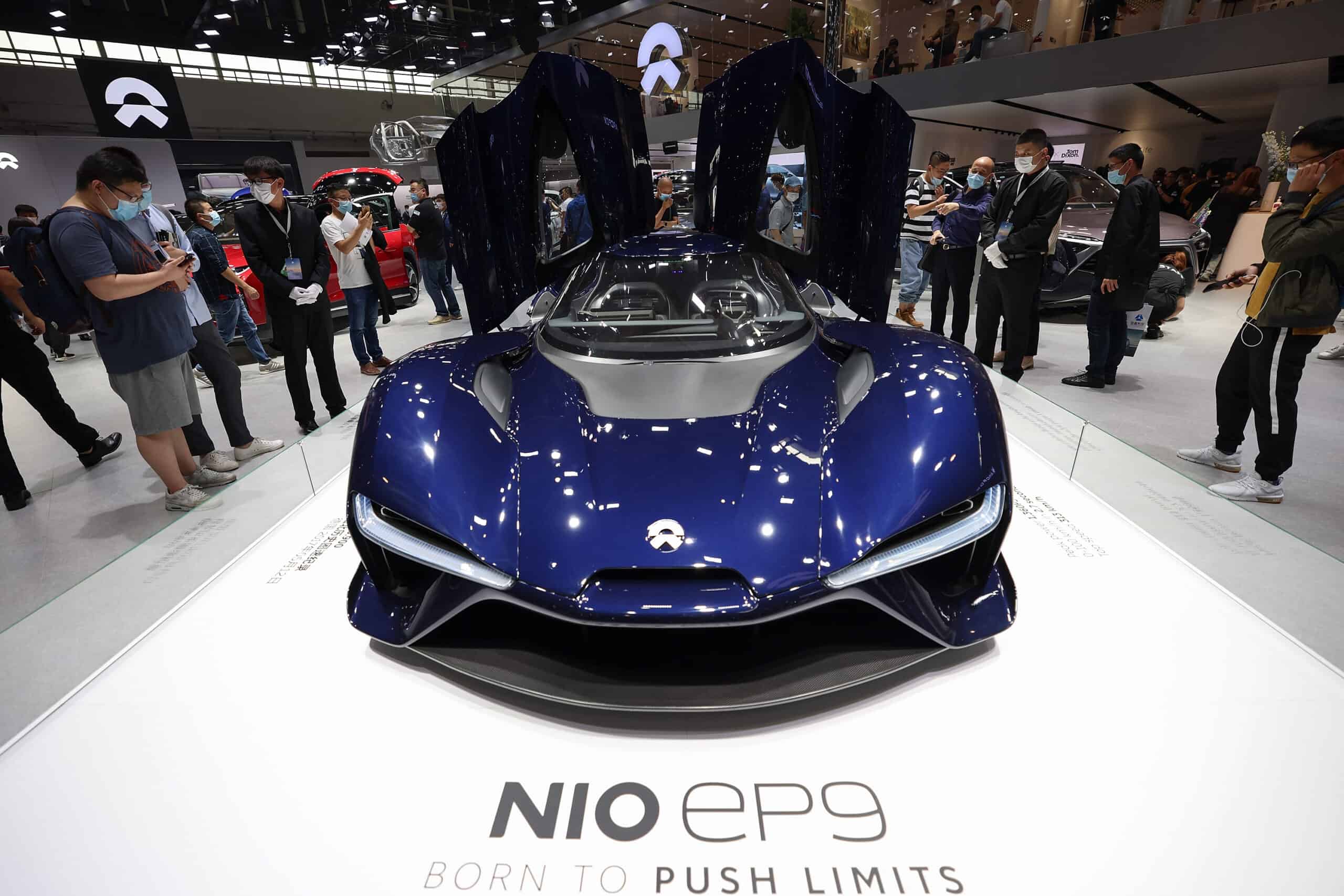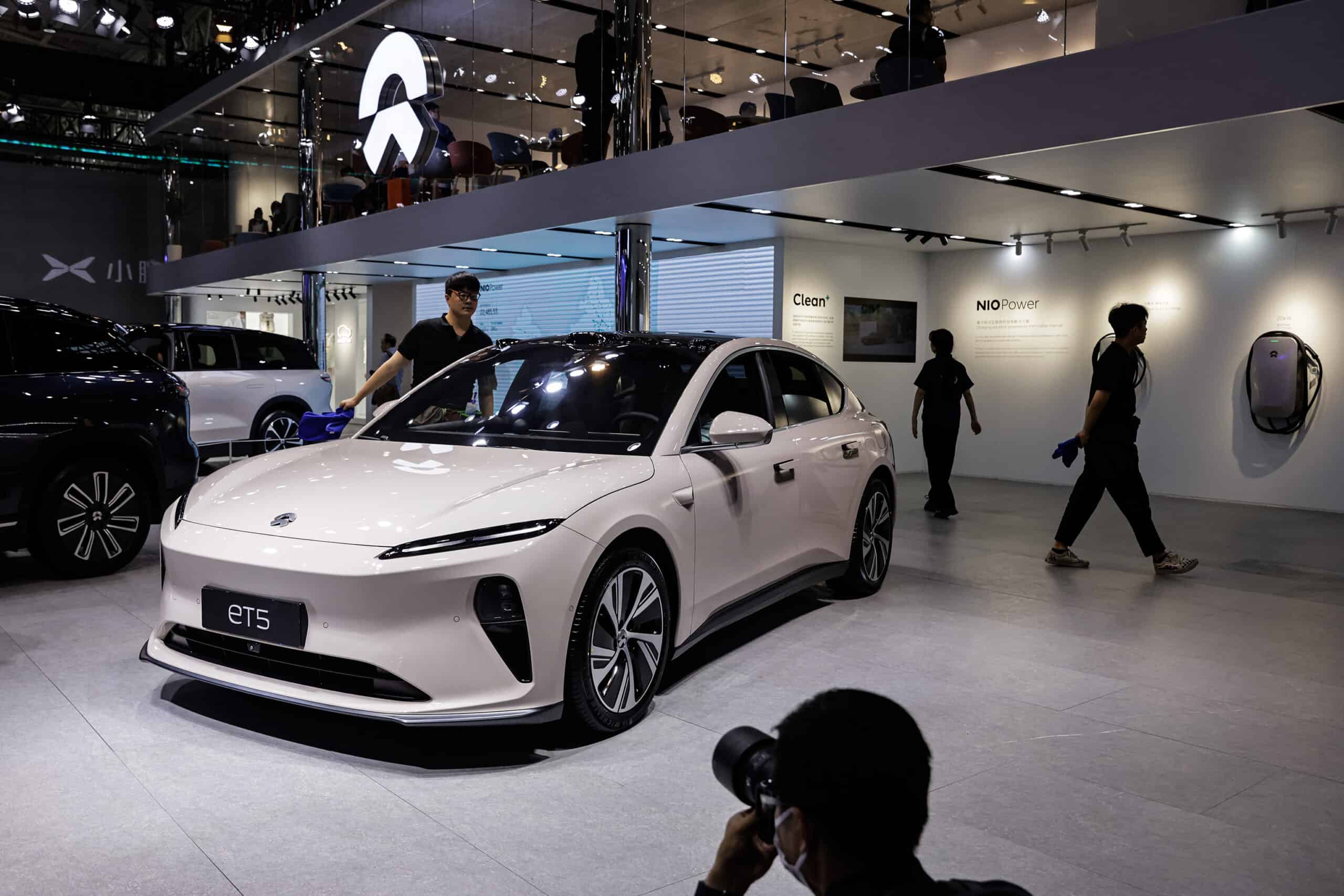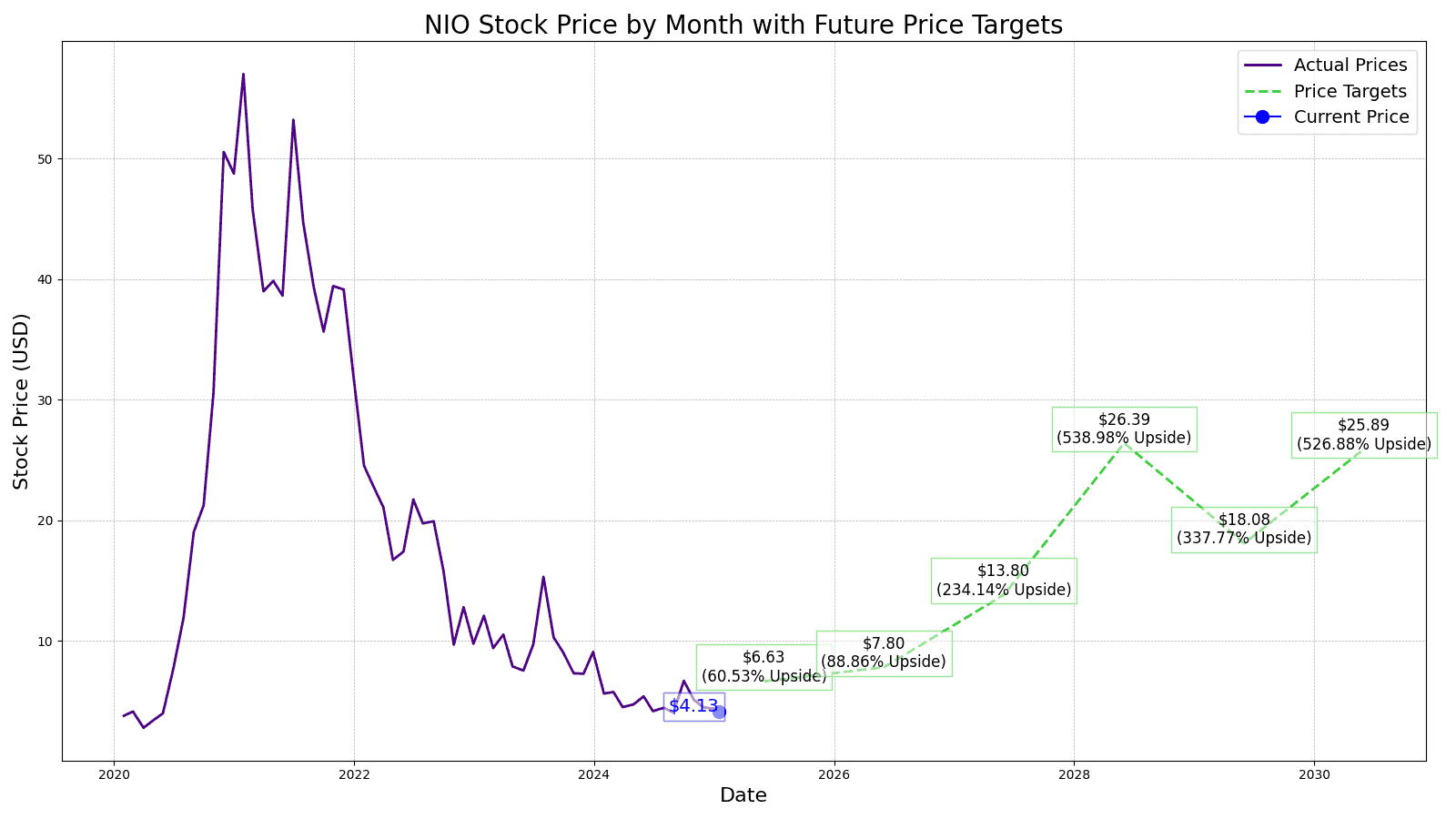Investing
NIO (NIO) Stock Price Prediction and Forecast 2025-2030 For January 16th

Published:

Shares of NIO (NYSE:NIO) gained 1.46% on Thursday, Jan. 16, reaching as high as $4.19 per share, building on its momentum this week after hitting $4.03 Monday morning. The stock is up nearly 3% since then — an encouraging sign after HSBC cut its outlook for the company from a “Buy” rating to a “Hold” rating in its report on Tuesday, Jan. 7.
Earlier this month, NIO rolled out its latest software update to European customers — version 2.4.0 of the Banyan operating system. This update introduces over 50 new features and enhancements, including a new driving mode specifically for the ET5 and ET5 Touring models. Inspired by NIO’s electric supercar, the EP9, this new “EP Mode” driving experience was previously only available in the Chinese market.
The Chinese carmaker’s high-performance models, which feature +600-mile range, have caught the eye of vehicle enthusiasts and investors, while addressing range anxiety issues by creating battery swap technology as a supplement to charging. NIO is one of the 10 largest vehicle manufacturers in the world and the third largest in China.
From a stock performance standpoint, NIO has been a tale of two stories. When shares debuted on the New York Stock Exchange on Sept. 12, 2018, at $9.90, they struggled to build that momentum. It wasn’t until the summer of 2020 when the stock began to surge, gaining over 810% from June 26, 2020, to Feb. 9, 2021, when the stock hit its all-time high of $62.84. Shares have fallen considerably since, but the long-term outlook remains strong.
24/7 Wall Street aims to provide readers with our assumptions about the stock’s prospects going forward, what growth we see in NIO stock for the next several years, and what our best estimates are for NIO’s stock price each year through 2030.

The following is a table of NIO’s revenues, operating income and share price for its first few years as a public company.
Here’s a table summarizing performance in share price, revenues and profits (net income) from 2014 to 2018.
| Share Price (End of Year) |
Revenues (CNY) | Operating Income | |
| 2018 | $5.39 | 4,951.2 | (9,595.6) |
| 2019 | $3.45 | 7,824.9 | (11,079.2) |
| 2020 | $40.00 | 16,257.9 | (4,607.6) |
| 2021 | $16.70 | 36,136.4 | (4,496.3) |
| 2022 | $7.87 | 49,268.6 | (15,640.7) |
| 2023 | $4.71 | 55,617.9 | (22,655.2) |
Revenue and operating income in Billion CNY (1CNY=.14 USD)
Now let’s take a look at Rivian (NASDAQ:RIVN) the first few years it was a publicly traded company (here is Rivian’s stock price forecast):
| Share Price (End of Year) |
Revenues | Operating Income | |
| 2021 | $50.24 | $55.0 | ($4,220.0) |
| 2022 | $19.30 | $1,658.0 | ($6,856.0) |
| 2023 | $10.70 | $4,434.0 | ($5,739.0) |
| TTM | $15.35 | $4,997.0 | (5,790.0) |
The revenue growth for both firms is similar but Rivian’s operating loss is more than double the yearly operating loss of NIO.
NIO formerly contracted its manufacturing to Jianghuai Automobile Group, paying a fee for each vehicle produced in addition to fixed cost. They have since acquired the factory from JAC. This agreement is beneficial for a young start-up in a very capital-intensive market. However, when scale is reached, the variable cost model has its downsides.

| Year | Revenue | Shares Outstanding | P/S Est. |
| 2025 | 97,052 | 2,050 mm | 1x |
| 2026 | 114,172 | 2,050 mm | 1x |
| 2027 | 134,643 | 2,050 mm | 1.5x |
| 2028 | 257,634 | 2,050 mm | 1.5x |
| 2029 | 176,533 | 2,050 mm | 1.5x |
| 2030 | 189,548 | 2,050 mm | 2x |
Revenue in CYN millions
Compared to Rivian and Tesla, NIO’s price-to-sales valuation will be moderately discounted. While NIO is in solid financial standing and has a premium brand image, it’s still uncertain how much competition the company will face in China and expanding overseas. The company is already spending a quarter of revenues on R&D and if NIO can’t capitalize on this spend, the stock price will be sluggish compared to North American EV manufacturers.

We expect to see revenue growth of 60% for the year, with a price-to-sales multiple of 1x, which puts our price target at $6.63, an upside of 60.53%.
Going into 2026, we estimate the price to be $7.80, with another strong 50%+ revenue bump. However, with EBITDA still well in the negative, we see the market not rewarding the stock as much and giving it a lower valuation multiple, resulting in an upside of 88.86%.
Heading into 2027, we expect the stock price increase to leap forward to $13.80 with another strong 50%+ revenue growth year-over-year. That is a 97% year-over-year gain and up 234.14% from today’s stock price.
When predicting more than three years out, we expect NIO’s P/S ratio in 2028 to be 1.5x and top-line growth of 50%. In 2028, we have NIO’s revenue coming in around $36 billion, suggesting a stock price estimate at $26.39 or a gain of 538.98% over the current stock price.
We estimate NIO’s stock price to be $25.89 per share. Our estimated stock price will be 526.88% higher than the current stock price.
| Year | Price Target |
| 2025 | $6.63 |
| 2026 | $7.80 |
| 2027 | $13.80 |
| 2028 | $26.39 |
| 2029 | $18.08 |
| 2030 | $25.89 |
Credit card companies are pulling out all the stops, with the issuers are offering insane travel rewards and perks.
We’re talking huge sign-up bonuses, points on every purchase, and benefits like lounge access, travel credits, and free hotel nights. For travelers, these rewards can add up to thousands of dollars in flights, upgrades, and luxury experiences every year.
It’s like getting paid to travel — and it’s available to qualified borrowers who know where to look.
We’ve rounded up some of the best travel credit cards on the market. Click here to see the list. Don’t miss these offers — they won’t be this good forever.
Thank you for reading! Have some feedback for us?
Contact the 24/7 Wall St. editorial team.